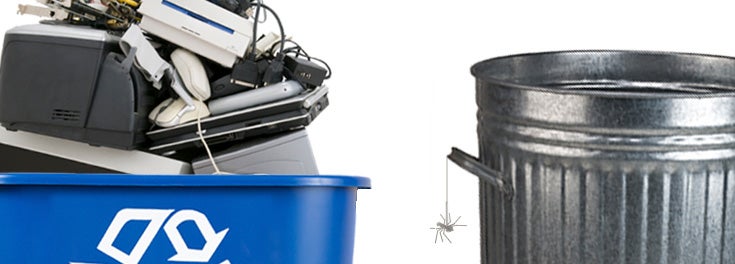
Everyone’s heard of sustainable energy, and many have heard of sustainable menus and fisheries. Well now, URI Engineering Professor Manbir Sodhi is leading an effort by sustainability advocates and researchers from eight countries, in cooperation with several of the country’s best-known brands – including Hasbro, L.L.Bean and A.T. Cross – to produce sustainable consumer products.
We need to find a balance between disposable products and sustainability. We can’t keep going the way we are. With the help of URI engineering students, the shift to green manufacturing is in sight.
We’re not talking about greener factories here, but making consumer products with a completely updated mindset – one that’s focused on environmentally friendly design and usage. The “design for obsolescence” manufacturing philosophy of the 1960s and 1970s spurred companies to intentionally produce disposable products that need to be replaced quickly and frequently. Sodhi says, “they may have spurred the economy, but it is a wasteful strategy.”
These “disposables” are the products Sodhi and his graduate students and other sustainability advocates want to encourage manufacturers to make more sustainable. “We’re now asking companies to design products so they retain value longer and to think about how they can take their product back to recycle it or reuse the parts used to make it,” he said.
Sodhi’s students explored the problem for possible solutions by taking apart several products – a car, a microwave, a computer, others – and finding out how much each individual part would cost if the product needed to be repaired. They found that the combined cost of the all the parts was 10-12 times more expensive than the cost of the whole product, creating a strong disincentive to repair products in favor of throwing them away and buying new ones. They’re talking with companies to try to find out if that disincentive is created by manufacturers or by the market, if it’s the same in countries where labor is much cheaper, and what can be done to change it.
They are also undertaking other related research projects, such as how to redesign products for recyclability, how to recover heat content and energy in the manufacturing process, and how to “harvest community effort” for collecting and separating materials for recycling. Professor Sodhi said that some companies are looking at lifetime warranties or extended service contracts as strategies for making products sustainable.
His big concern is that many products, especially electronics, have an increasingly shorter life cycle and the total number of products being produced is increasing, which means people are disposing of a greater number of products.
“We need to find a balance between disposable products and sustainability,” he said. “We can’t keep going the way we are.” With the help of our engineering students, the shift to green manufacturing is in sight.
